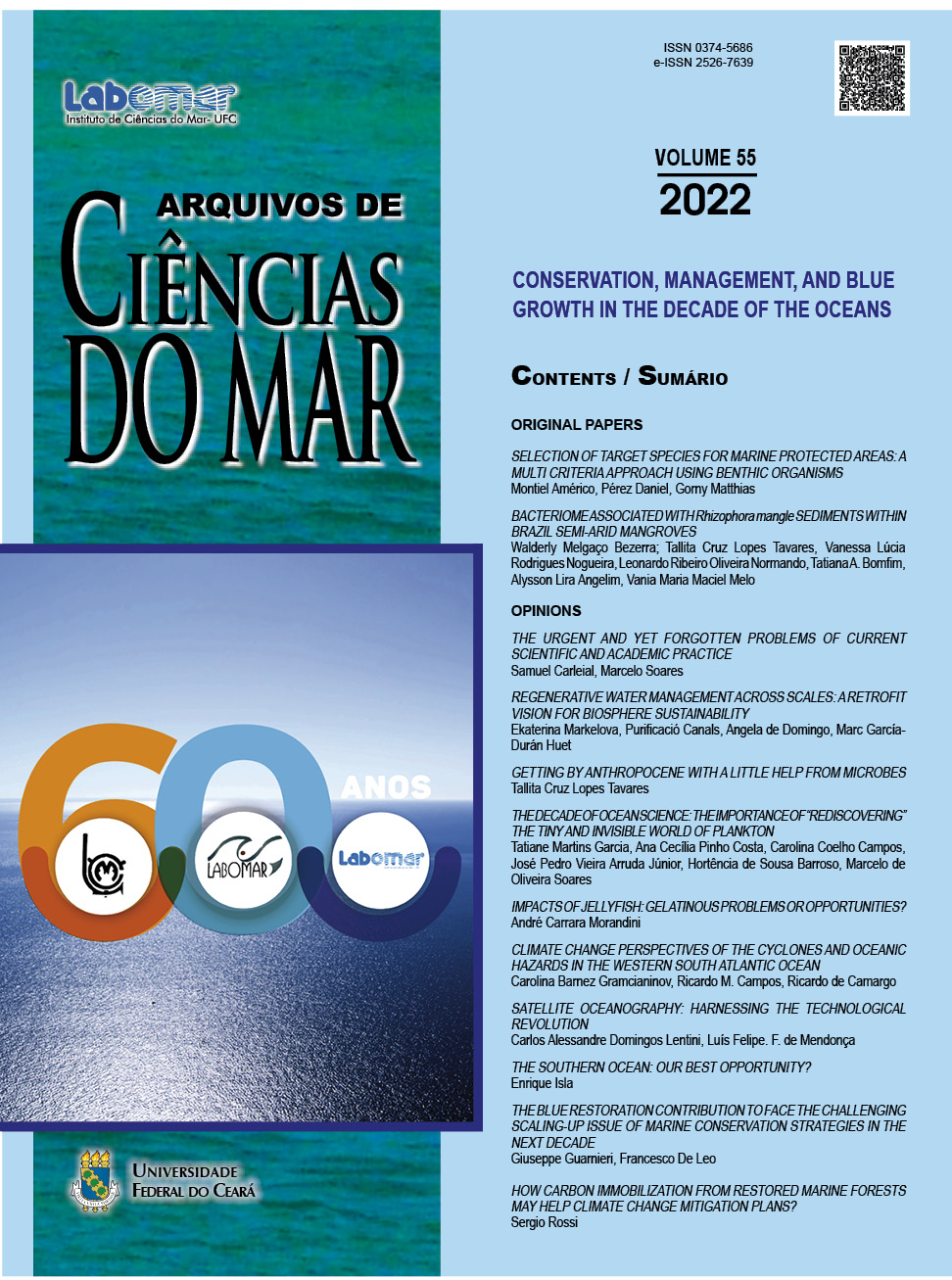HOW CARBON IMMOBILIZATION FROM RESTORED MARINE FORESTS MAY HELP CLIMATE CHANGE MITIGATION PLANS?
Como a imobilização de carbono de florestas marinhas restauradas pode ajudar os planos de mitigação das mudanças climáticas?
DOI:
https://doi.org/10.32360/acmar.v55iEspecial.78542Resumen
The ocean transformation due to the direct or indirect human influence is a fact. One of the most affected ecosystems are the benthic ones, where bottom trawling, urban/agricultural development and climate change (among other things) deeply transform the bottom communities. Among these threatened communities, the marine forest is the most extended. The marine forest is composed of benthic macroalgae, phanerogams and suspension feeders (sponges, corals, gorgonians, etc.) which conform three-dimensional living structures. Coral reefs, seaweeds, sponge grounds, seagrasses, oyster banks, cold water corals are some examples of this vast set of ecosystems dispersed all over the world. During the last two decades, the concept of Blue Carbon has been consolidated, describing the stocked carbon in vegetated coastal and marine habitats such as mangroves, salt marshes, seagrasses and seaweeds. There are also world-wide numbers about how much carbon is retained in the terrestrial forests, crops and soils. These systems act as carbon immobilizers from which we have proxies. Can we design and apply an ambitious shallow and deep marine forest restoration plan to help climate change mitigation? The aim of this
paper is developing a simplified realistic calculation of the role as carbon immobilizers of a restored marine forests in one area as a case study, setting up a huge restoration plan to help mitigating climate change, enhancing carbon retention. A shallow (10-30 meters depth) restoration plan of the marine animal forests with new technologies based on symbiotic artificial reefs, enhancing the role as carbon immobilizers and creating a protocol to help the climate change mitigation, is explained, using realistic numbers to calculate the real impact of such regenerative plan. Is time to have a much more applied and holistic view of what is in the ocean’s floors in terms of habitat composition, complexity and biomass stocks, implementing new methods and technologies that are already in our hands. It is also time to give a chance to the oceans in helping in the climate change mitigation plans applying brave new restoration approaches that may change our relation with the sea.
Keywords: marine restoration, marine animal forests, artificial reefs, transplantation,
forest ecology.
Descargas
Publicado
Número
Sección
Licencia
1. Proposta de Política para Periódicos de Acesso Livre
Autores que publicam nesta revista concordam com os seguintes termos:
- Autores mantém os direitos autorais e concedem à revista o direito de primeira publicação, com o trabalho simultaneamente licenciado sob a Licença Creative Commons Attribution que permite o compartilhamento do trabalho com reconhecimento da autoria e publicação inicial nesta revista.
- Autores têm autorização para assumir contratos adicionais separadamente, para distribuição não-exclusiva da versão do trabalho publicada nesta revista (ex.: publicar em repositório institucional ou como capítulo de livro), com reconhecimento de autoria e publicação inicial nesta revista.
- Autores têm permissão e são estimulados a publicar e distribuir seu trabalho online (ex.: em repositórios institucionais ou na sua página pessoal) a qualquer ponto antes ou durante o processo editorial, já que isso pode gerar alterações produtivas, bem como aumentar o impacto e a citação do trabalho publicado (Veja O Efeito do Acesso Livre).

